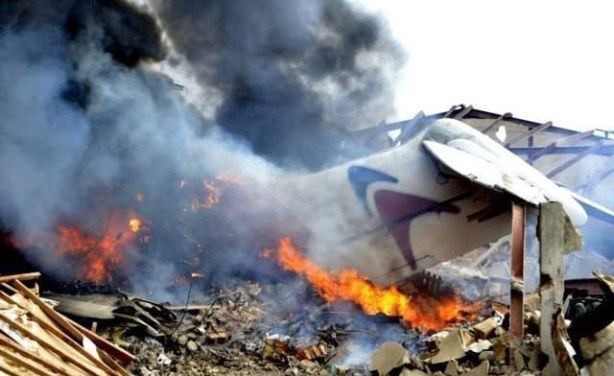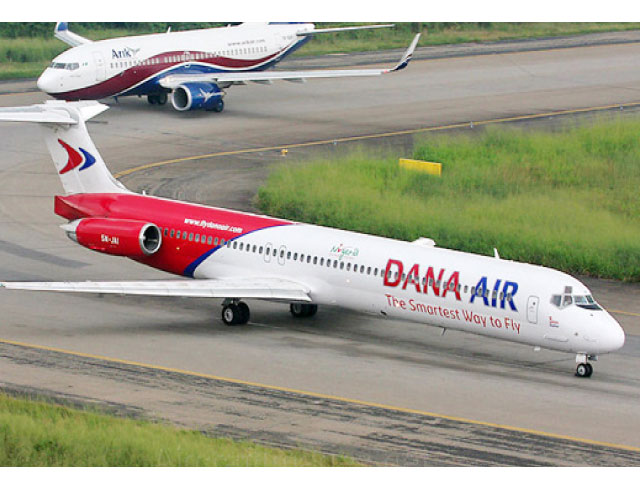Dana Air Flight 0992 was a scheduled domestic passenger flight in Nigeria that flew from Abuja to Lagos. The route’s McDonnell Douglas MD-83 aircraft suffered a dual-engine failure on its approach to Lagos on June 3, 2012. It missed its target and slammed into buildings, killing all 153 people on board and six people on the ground. It is the deadliest commercial airplane crash in Nigerian history, with 159 casualties, since the Kano air tragedy in 1973.
Both aircraft’s engines lost power during the approach to Lagos, according to the Nigerian Accident Investigation Bureau (AIB). The gasoline line between the engines had been cut due to incorrect assembly, resulting in fuel not being provided to both engines. The pilots decided not to call an emergency until the second engine lost power during the flight’s final approach during the initial phase of the engine failure. The plane crashed into buildings due to the pilots’ lack of situational awareness and poor decision-making.
Nigeria’s aviation safety record was once again exposed by the tragedy. After EAS Airlines Flight 4226 in 2002, Bellview Airlines Flight 210 and Sosoliso Airlines Flight 1145 in 2005, and ADC Airlines Flight 053 in 2006, it was the fifth significant Nigerian aviation accident in a decade. As a result, the country’s aviation sector was completely overhauled. Nigeria’s aviation safety has improved dramatically since the tragedy of Flight 992, and the country has maintained its category 1 classification.

The Crash
The aircraft’s thrust strength dwindled as it drew closer to the ground. The crew tried multiple times to employ stabilizer trim to avoid obstructions and buildings ahead of them, but their efforts were futile. The airplane rapidly lost altitude, and the altitude alert sounded until the recording ended.
The MD-83 crashed near the airport in the highly populated Iju-Ishaga neighbourhood. With its right wing, it struck a two-story Power Holding Company of Nigeria building, then multiple trees and three additional structures. The plane then went up in flames after exploding. The fire then spread over the area.
The fire had entirely destroyed every structure of the aircraft by the time the authorities were able to put out the flames, with only the tail left. The crash location yielded no survivors. There had been no survivors among the 153 passengers and crew members. The crash also killed at least six individuals on the ground. According to forensic research, 27 individuals on board the plane, all of whom were seated in the back, originally survived the crash. Some inhabitants said that they attempted to flee the blazing wreckage and that locals attempted to rescue them by opening the emergency exit. They were quickly overcome by the fumes and subsequent explosions.
The fire had entirely destroyed every structure of the aircraft by the time the authorities were able to put out the flames, with only the tail left. The crash location yielded no survivors. There had been no survivors among the 153 passengers and crew members. The crash also killed at least six individuals on the ground. According to forensic research, 27 individuals on board the plane, all of whom were seated in the back, originally survived the crash. Some inhabitants said that they attempted to flee the blazing wreckage and that locals attempted to rescue them by opening the emergency exit. They were quickly overcome by the fumes and subsequent explosions.

Investigations into the Engine Failure
Just minutes before the plane crashed into the densely populated residential district of Iju-Ishaga, the crew of Flight 0992 reported a dual-engine failure. The observed damage was consistent with low-to-no RPM at the time of contact, confirming that both engines had not generated much power. More investigation was required to confirm the cause of the failure. Both engines were transferred to the United States for disassembly while they were being overhauled by Millenium Engine Associates Inc. in Miami.
Investigators observed multiple cracks in the left engine’s fuel lines during the breakdown of both engines. Shear lips were seen on the gasoline feeder lines, which were cracked flush. The primary gasoline manifold had sunk to the ground. The secondary gasoline manifold had twisted and needed to be replaced. Its fuel transfer tube had practically stopped the flow of fuel, lowering the fuel nozzle’s diameter. The secondary fuel manifold on the right engine had collapsed, while the primary fuel manifold had fractured. The No.5 and No.6 fittings on the gasoline lines of both engines had also split and bent.
Also, the investigators discovered that there was a possibility of microbial growth in the fuel supply, which was caused by the storage of the fuel that had been exposed to the sun. This, according to their findings, must have caused the temperature of the fuel to rise.
However, other investigations were reported to Dana Air and Nigeria’s NCAA for further recommendations.
Naijabiography hereby condoles with the rest of Nigerians mourning the victims of the people who lost their lives in the plane crash on this day.





